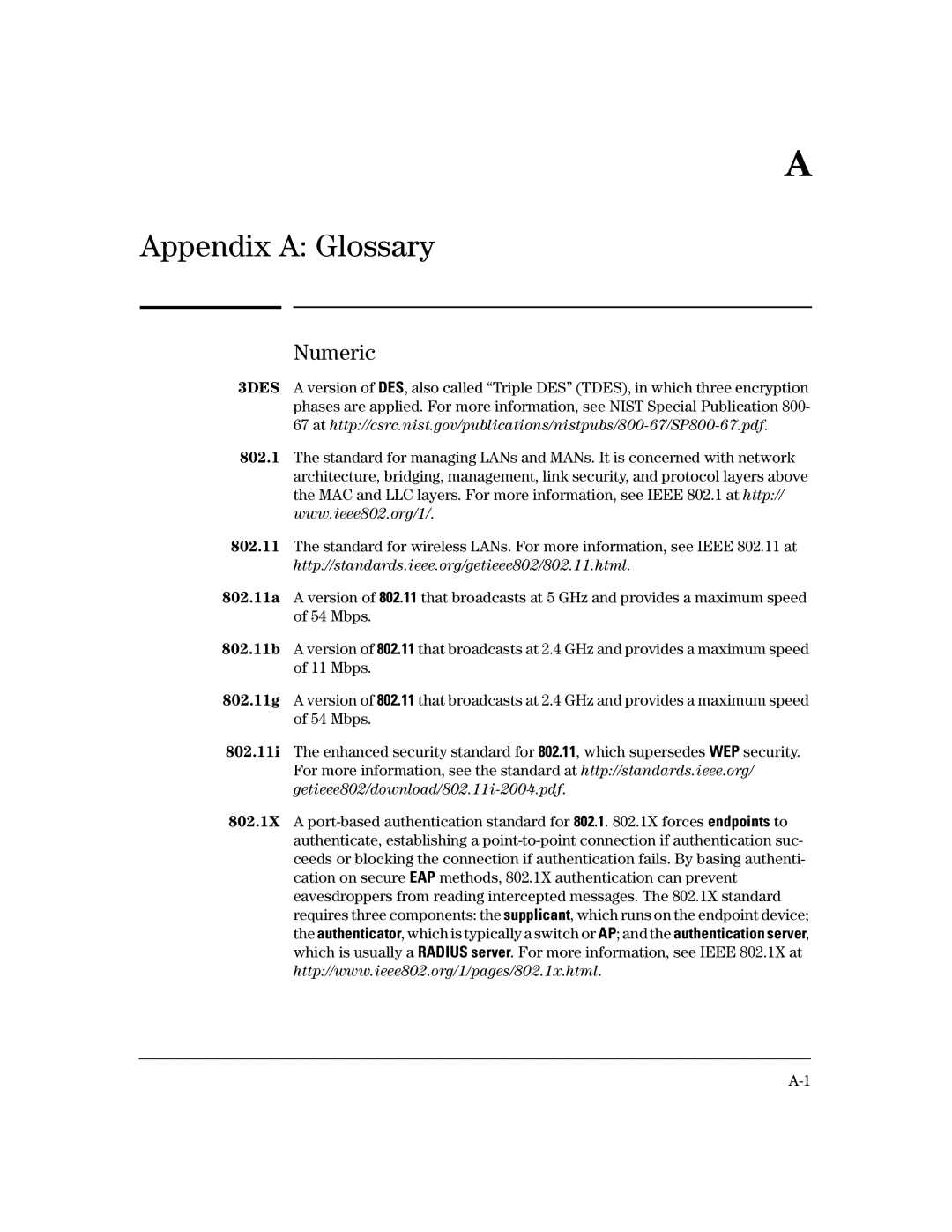
A
Appendix A: Glossary
Numeric
3DES A version of DES, also called “Triple DES” (TDES), in which three encryption phases are applied. For more information, see NIST Special Publication 800-
67 at
802.1The standard for managing LANs and MANs. It is concerned with network architecture, bridging, management, link security, and protocol layers above the MAC and LLC layers. For more information, see IEEE 802.1 at http:// www.ieee802.org/1/.
802.11The standard for wireless LANs. For more information, see IEEE 802.11 at http://standards.ieee.org/getieee802/802.11.html.
802.11a A version of 802.11 that broadcasts at 5 GHz and provides a maximum speed of 54 Mbps.
802.11b A version of 802.11 that broadcasts at 2.4 GHz and provides a maximum speed of 11 Mbps.
802.11g A version of 802.11 that broadcasts at 2.4 GHz and provides a maximum speed of 54 Mbps.
802.11i The enhanced security standard for 802.11, which supersedes WEP security. For more information, see the standard at http://standards.ieee.org/
802.1X A
